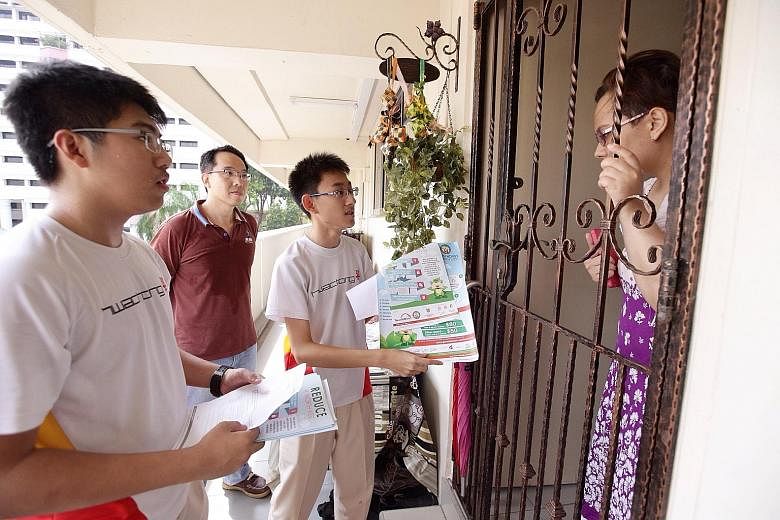Despite the hot weather, housewife Ramasamy Bharathy and her family use air-conditioning in one instead of two rooms.
They use it only in the master bedroom, where the family gathers. Her two children study together and not in separate rooms, so they use only the lights in one room.
"There's more time for us to spend together now," said the 37-year-old. "The children can also cooperate and help each other."
What's more, their energy bill has been reduced by up to 40 per cent since they started adopting these practices last year.
Madam Bharathy's household is one of an estimated 10,000 that have pledged to reduce their energy use under a scheme introduced by the North West Community Development Council (CDC) in 2011.
-
HOW TO KEEP COOL AND SAVE MONEYEY
-
FUN FACTS
• Refrigerators and air-conditioners guzzle up more than half of the energy used by households.
• In 1999, the cost of air-conditioning homes and offices in Singapore added up to $768 million.
• The energy used in an hour by an air-conditioning system with two inverters, or indoor units, can power 261/2 ceiling fans, 10 refrigerators (400 litres, door closed), or 61/2 desktop computer systems.
ENERGY-SAVING TIPS
• Setting your two-inverter air-conditioning system on timer and using a standing fan when you sleep can cut your annual bill by nearly half, from $1,018.32 to $547.32.
• Cleaning your air-conditioner filters monthly can cut energy use by 5 to 15 per cent, and improve air quality.
• Buy energy-efficient appliances with more ticks.
• LED bulbs use 25 to 80 per cent less energy than traditional incandescent bulbs, and can last up to 25 times longer.
Alexis Ong
•Sources: Singapore Power, Northwest CDC, US Department of Energy
This translates to at least 130,000 kWh of energy saved from 2011 to last year, enough to power up about 500 three-room flats for a month.
Last month, another 1,000 or so households in Nee Soon East and Bukit Panjang were added to the list after they pledged to use less energy for six months.
A total of 1,815 Hwa Chong Institution (HCI) students went door to door in 280 blocks in these areas on March 21 to share energy-saving tips and encourage households to make the pledge.
Under the Reduce@North West scheme, students are trained to reach out to residents in north-western Singapore to educate and encourage them to sign up for the energy audit programme.
Ryan Kang Bing Hui, 15, chairman of the Green Council, an environmental interest group at HCI, said the initiative was special as it combined social and environmental causes.
"Sometimes, before we can share, people shut their doors on us," he said, adding that this happened with about three in 10 residents.
"We'd all feel a bit rejected then. But there's the reverse, when we get someone who agrees, it motivates us," he said.
Another participant, Lim Jia Yin, 17, said she found the residents' responses encouraging.
Around half of the households which opened their doors to them agreed to the pledge, she added.
She said: "So many of us have sufficient knowledge about the situation that the earth is in right now, but we can't seem to stop and think about what we can and should do.
"Helping the environment is up to every individual. I hope there'll be such a change in perspective."
The pledges do not just translate into energy saved, but also utility vouchers for needy families.
In partnership with North West CDC, property developer City Developments Limited donated $100,000 to the North West Utility Assistance Scheme last year, matching $10 for every household that made the pledge.
The North West CDC aims to help 600 needy households for three years from last year to next year by distributing this money to them in the form of utility vouchers.

